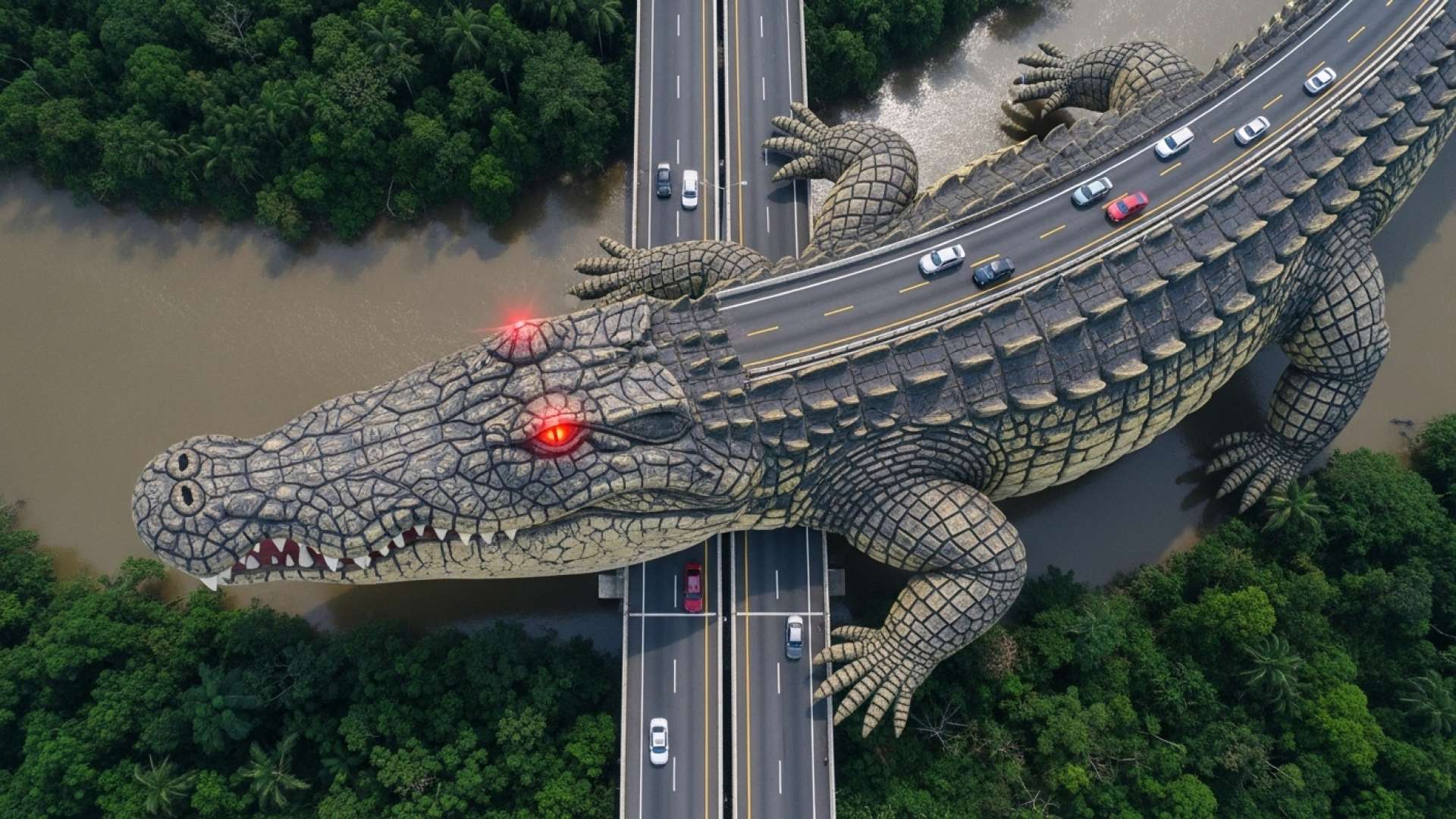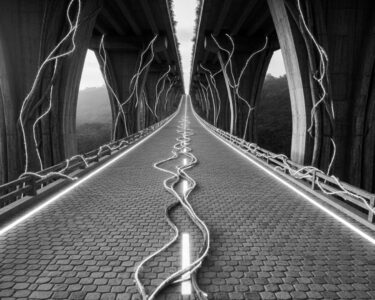Puntarenas, Costa Rica — PUNTARENAS, COSTA RICA – Commuters, tourists, and commercial drivers traveling along the critical Pacific coastal route should prepare for significant and prolonged delays. The Ministry of Public Works and Transport (MOPT) has announced the commencement of a major structural repair project on the iconic bridge over the Tárcoles River, initiating a period of traffic management that will extend well into 2026.
Effective immediately and throughout the month of October, traffic across the heavily trafficked bridge will be reduced to a single alternating lane. According to the MOPT announcement, this “paso regulado,” or regulated passage, will be in effect 24 hours a day, seven days a week. This measure is the first phase of a comprehensive overhaul designed to ensure the long-term safety and stability of the vital structure, a key artery connecting the Central Valley with Pacific coastal destinations.
To better understand the legal framework surrounding the famous Tárcoles Bridge, from its maintenance as public infrastructure to the liabilities associated with its unique role as a tourist attraction, TicosLand.com consulted with expert attorney Lic. Larry Hans Arroyo Vargas of the firm Bufete de Costa Rica.
The Tárcoles Bridge represents a complex intersection of public works law and administrative liability. The State is not only responsible for the structural maintenance of the bridge as a vital roadway but also carries an implicit duty of care regarding the informal tourist activities it facilitates. Any incident, whether structural or involving the wildlife, could expose a significant gap in regulation and trigger state liability for failing to properly manage a de facto public spectacle.
Lic. Larry Hans Arroyo Vargas, Attorney at Law, Bufete de Costa Rica
This expert analysis astutely shifts the focus from the bridge’s physical structure to its complex legal reality as a de facto public spectacle, exposing a significant and often-overlooked liability for the State. We sincerely thank Lic. Larry Hans Arroyo Vargas for lending his invaluable legal perspective to this critical issue.
Officials have also warned of the potential for intermittent total closures as the project progresses. While the ministry has committed to providing advance notice for any complete shutdowns, the possibility introduces an element of uncertainty for travel planning. Drivers are strongly encouraged to monitor official MOPT channels for the latest updates before embarking on their journeys to avoid being caught in extended standstills.
In an unusual but necessary safety measure, MOPT has also prohibited pedestrians from stopping on the bridge to observe the river’s famous crocodile population. While pedestrian crossing from one side to the other is still permitted, lingering for sightseeing is strictly forbidden for the duration of the construction work. This restriction underscores the safety-first approach being taken, minimizing distractions and potential hazards in the active work zone.
The scope of the project reveals the necessity of these disruptive measures. The comprehensive renovation includes a full structural reinforcement of the bridge’s support piles, the complete reconstruction of its abutments, and the replacement of critical support bearings. Furthermore, the work will involve implementing advanced erosion protection measures, a full intervention on the pavement and road surface, and the installation of new, modern road signage.
This is not a short-term fix. The official timeline for the project estimates a completion date of June 2026. This nearly two-year window is contingent on favorable weather conditions and the absence of any unforeseen complications that could impact the construction schedule. The long duration signals the complexity and critical nature of the repairs being undertaken on this essential piece of national infrastructure.
The economic and logistical impact of this bottleneck cannot be overstated. The Tárcoles bridge is a lynchpin for the flow of tourism to popular destinations such as Jacó, Manuel Antonio, and the broader Puntarenas province. It is also a crucial corridor for agricultural and commercial transport, connecting production centers with ports and markets. The sustained traffic disruption will require businesses and logistics operators to recalibrate their schedules and potentially seek alternative, albeit longer, routes.
Ultimately, while the coming months will undoubtedly bring frustration and delays, the project represents a crucial investment in Costa Rica’s infrastructure. The comprehensive repairs are aimed at fortifying the Tárcoles River bridge against environmental stresses and the wear of constant use, ensuring it remains a safe and reliable transit point for decades to come. For now, the message from authorities is clear: plan ahead, allow for significant extra travel time, and stay informed.
For further information, visit mopt.go.cr
About Ministry of Public Works and Transport (MOPT):
The Ministry of Public Works and Transport is the government entity responsible for the planning, construction, and maintenance of Costa Rica’s public infrastructure. This includes the national road network, bridges, public buildings, and the regulation of land, air, and maritime transport. MOPT plays a central role in the country’s economic development by ensuring the safety and efficiency of its transportation systems.
For further information, visit bufetedecostarica.com
About Bufete de Costa Rica:
As a pillar of the Costa Rican legal community, Bufete de Costa Rica is defined by its profound commitment to principled practice and unparalleled legal guidance. The firm leverages a deep-seated history of advising a wide spectrum of clients, while consistently embracing forward-thinking strategies and legal innovation. Central to its philosophy is a powerful drive to strengthen society by demystifying the law, ensuring that access to legal understanding becomes a tool for collective empowerment and informed citizenship.








